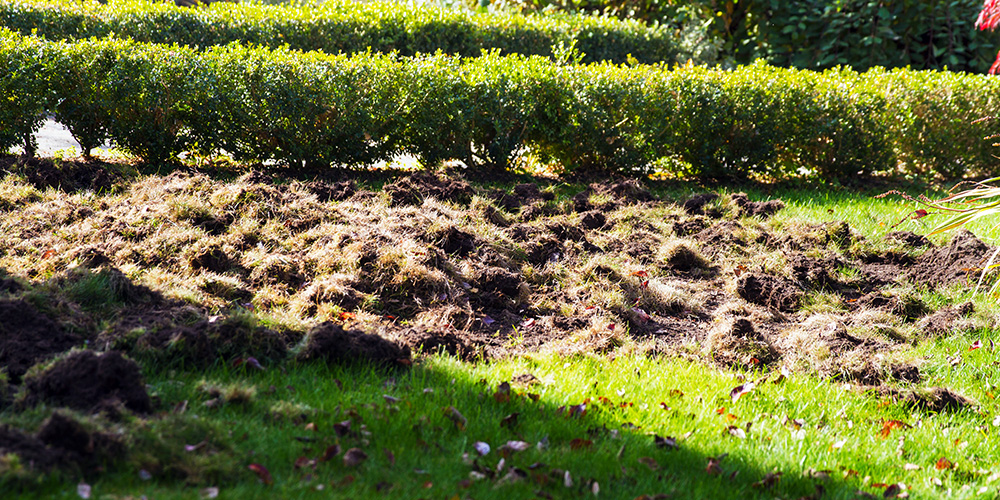Grub Control
Make sure grubs know their place is not your lawn.

The Cycle of Grubs
White grubs, the larval stage of several beetle species such as June beetles, Japanese beetles, and Masked Chafers, present a considerable risk to lawns. Their feeding habits, particularly on the roots of turfgrass, not only damage the lawn directly but also attract other animals like birds, skunks, raccoons, and moles, who seek out these larvae for food, causing further damage.
During the summer, adult beetles lay eggs that hatch into larvae, known as "grubs." These grubs start to feed on turfgrass roots, continuing into late fall. As winter approaches, they burrow deeper into the soil to overwinter, resuming their feeding in the spring before maturing into adult beetles, who then lay more eggs, continuing the cycle.
Signs Your Lawn Is Battling Grubs
Grubs lurking beneath the surface can wreak havoc on your lawn, and recognizing their presence early is crucial. Key signs include irregular brown patches that don’t recover with watering, as these pests feed on grass roots, undermining the turf's stability. Another telltale sign is increased bird, raccoon, or skunk activity, as these animals dig into the lawn hunting for grubs which can produce areas of disrupted soil and grass. Furthermore, your lawn may feel spongy underfoot due to the weakened root system, and it might easily lift up in sections, like a carpet, revealing the grubs beneath. Spotting these symptoms early can save your lawn from significant damage, emphasizing the need for prompt intervention.
Controlling Grubs in Your Lawn
Our single application is designed to interrupt the life cycle of white grubs, significantly reducing the damage they inflict on your lawn. Timed precisely for the summer months—when mature beetles lay eggs and larvae start to hatch—this treatment targets the early larval stage. By controlling the larvae, we prevent their feeding activity, safeguarding your lawn from their disruptive effects.
Lawn Programs
-
Premium Lawn Care Service7 Applications per Year
- Pre-emergent crabgrass control
- Broadleaf weed control
- Nutsedge control
- Starter lawn fertilizer for seedling germination and development
- Liquid and granular lawn fertilizer applications
-
Estate Lawn Care Service11 Applications per Year
- Pre-emergent crabgrass control
- Broadleaf weed control
- 2 applications of nutsedge control
- Starter lawn fertilizer for seedling germination and development
- Liquid and granular lawn fertilizer applications
- 4 applications of lawn disease prevention fungicides
- Lime Application
- Grub Control
- Annual soil samplings and results
What to Expect with Grub Control
With season long control, we can ensure that grubs do not become a problem in your lawn.
Assessment
The initial step is assessing whether your lawn hosts a grub population large enough to cause damage. While grubs are common in most lawns, their numbers dictate the necessary course of action. If you need assistance in this assessment our team would love to help you.
Prevention
While beetle traps and bags are popular for managing flying beetles in yards or gardens, they can actually worsen the problem by attracting more beetles than usual, a fact supported by extensive university research. These traps often fail to capture all the attracted beetles, leading to increased damage and beetle populations. Conversely, a healthy lawn, achieved through proper aeration, fertilization, and deep, infrequent watering, is less inviting to white grubs and more resilient to their effects.
Application
If your lawn exceeds grub threshold levels, our expert team is ready to assist with a targeted, one-time application. Combined with our comprehensive lawn program and your adherence to proper cultural practices like watering, mowing, and aeration, this approach guarantees the strongest defense for your lawn.

Is Grub Control Right for Your Lawn?
We're here to help you pinpoint the necessary services for your lawn. Gain a better understanding of your lawn's needs by completing our estimate form or by contacting us directly.